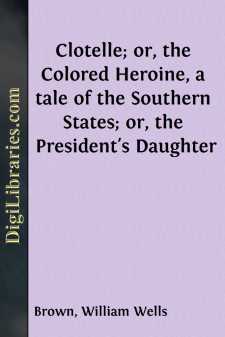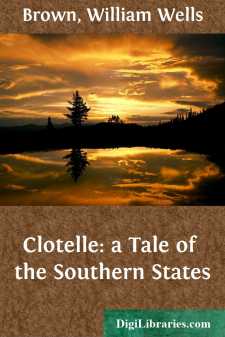Categories
- Antiques & Collectibles 13
- Architecture 36
- Art 48
- Bibles 22
- Biography & Autobiography 813
- Body, Mind & Spirit 141
- Business & Economics 28
- Children's Books 12
- Children's Fiction 9
- Computers 4
- Cooking 94
- Crafts & Hobbies 4
- Drama 346
- Education 46
- Family & Relationships 57
- Fiction 11826
- Games 19
- Gardening 17
- Health & Fitness 34
- History 1377
- House & Home 1
- Humor 147
- Juvenile Fiction 1873
- Juvenile Nonfiction 202
- Language Arts & Disciplines 88
- Law 16
- Literary Collections 686
- Literary Criticism 179
- Mathematics 13
- Medical 41
- Music 40
- Nature 179
- Non-Classifiable 1768
- Performing Arts 7
- Periodicals 1453
- Philosophy 64
- Photography 2
- Poetry 896
- Political Science 203
- Psychology 42
- Reference 154
- Religion 513
- Science 126
- Self-Help 83
- Social Science 81
- Sports & Recreation 34
- Study Aids 3
- Technology & Engineering 59
- Transportation 23
- Travel 463
- True Crime 29
William Wells Brown
William Wells Brown (1814–1884) was an African American abolitionist, novelist, and historian, widely regarded as one of the first African American authors to publish a novel. Born into slavery in Kentucky, Brown escaped to the North and became an outspoken advocate for the abolition of slavery and racial equality. His notable works include the novel "Clotel; or, The President's Daughter" (1853), considered the first novel written by an African American, and "Narrative of William W. Brown, a Fugitive Slave" (1847), his autobiographical account. Brown's writing and activism made him a prominent figure in the anti-slavery movement.
Author's Books:
Sort by:
MEMOIR OF WILLIAM WELLS BROWN. A narrative of the life of the author of the present work has been most extensively circulated in England and America. The present memoir will, therefore, simply comprise a brief sketch of the most interesting portion of Mr. Brown's history while in America, together with a short account of his subsequent cisatlantic career. The publication of his adventures as a...
more...
CHAPTER I. THE SOUTHERN SOCIAL CIRCLE FOR many years the South has been noted for its beautiful Quadroon women. Bottles of ink, and reams of paper, have been used to portray the "finely-cut and well-moulded features," the "silken curls," the "dark and brilliant eyes," the "splendid forms," the "fascinating smiles," and "accomplished manners" of these...
more...
CHAPTER I. I was born in Lexington, Ky. The man who stole me as soon as I was born, recorded the births of all the infants which he claimed to be born his property, in a book which he kept for that purpose. My mother's name was Elizabeth. She had seven children, viz: Solomon, Leander, Benjamin, Joseph, Millford, Elizabeth, and myself. No two of us were children of the same father. My father's...
more...
THE SLAVE'S SOCIAL CIRCLE. With the growing population in the Southern States, the increase of mulattoes has been very great. Society does not frown upon the man who sits with his half-white child upon his knee whilst the mother stands, a slave, behind his chair. In nearly all the cities and towns of the Slave States, the real negro, or clear black, does not amount to more than one in four of the...
more...





